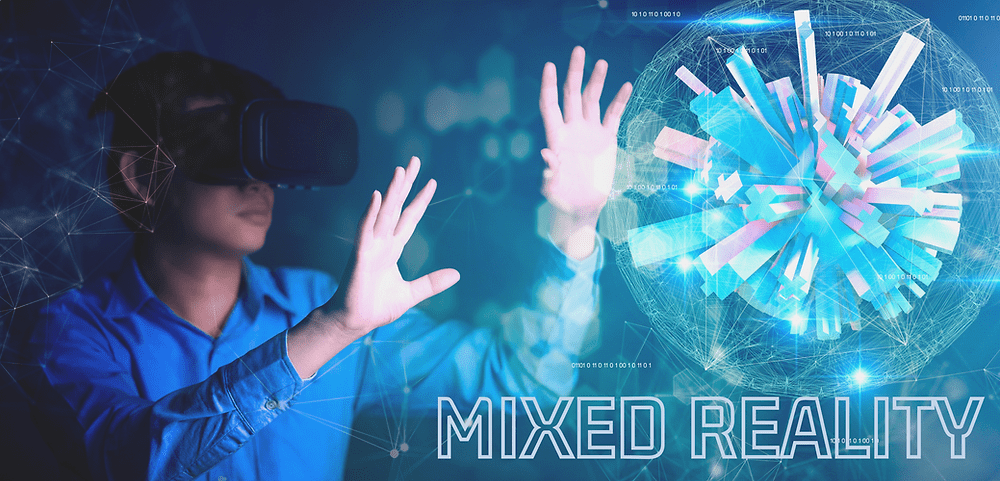By merging the real and virtual worlds, Mixed Reality (MR) marks a significant leap forward in the evolving landscape of digital experiences. It blends the best aspects of both virtual reality (VR) and augmented reality (AR), allowing users to engage in an environment where digital and physical elements coexist seamlessly.
Understanding Mixed Reality
MR combines the two to create interactive settings where digital and physical items coexist and interact in real time, in contrast to AR, which superimposes digital elements over the actual world, and VR, which immerses users in a fully virtual environment. With MR, you may have a holographic meeting with coworkers from all over the world or a virtual pet that can interact with the furniture in your actual living room.
The Advent of Mixed Reality
The idea of mixed reality (MR) isn’t something that just popped up recently. Its early signs were observed back in 2017. Thanks to technological advancements and the shrinking size of computing components, MR devices started to appear, offering an interactive experience that was previously unimaginable. Wearable technology, holographic displays, and unique glasses create a glimpse into this mixed reality, allowing for interactions that felt like science fiction just ten years ago.
Applications of Mixed Reality
The application of MR goes beyond gaming and entertainment, proving to be beneficial in a myriad of industries:
- Education: Mixed Reality provides an interactive learning environment where students can manipulate and engage with holographic objects, making abstract concepts tangible and easier to understand.
- Healthcare: Surgeons can overlay digital scans on the actual patient for precision-based procedures, and medical students can practice complex surgeries in a risk-free, mixed-reality environment.
- Real Estate: Potential buyers can take virtual tours of properties, customizing interiors with digital furniture to visualize their future home.
- Retail: Shoppers can try on outfits or accessories virtually, seeing how they look before making a purchase decision.
- Engineering and Design: Designers can manipulate and evaluate 3D prototypes in the real world, making design iterations more efficient.
The Potential and Challenges
While MR offers significant promise, it also faces several challenges. Issues such as hardware constraints, software compatibility, and the creation of genuinely immersive content remain obstacles that have yet to be fully addressed. Additionally, similar to any digital interface, there are concerns regarding privacy and the effects of merging digital content with real-world experiences.
Looking Ahead
The future of MR is brimming with possibilities. As technology continues to advance, the line between the virtual and real worlds will blur even further. Mixed Reality could redefine how we learn, work, and play, pushing the boundaries of our experiences.
In conclusion, Mixed Reality is not just another technological advancement; it represents a shift in how we perceive and interact with the world around us. The fusion of real and digital, tangible and virtual, is set to revolutionize industries and redefine experiences. While challenges remain, the potential of MR is boundless, promising a future where our interactions with technology become more natural and immersive than ever before.
